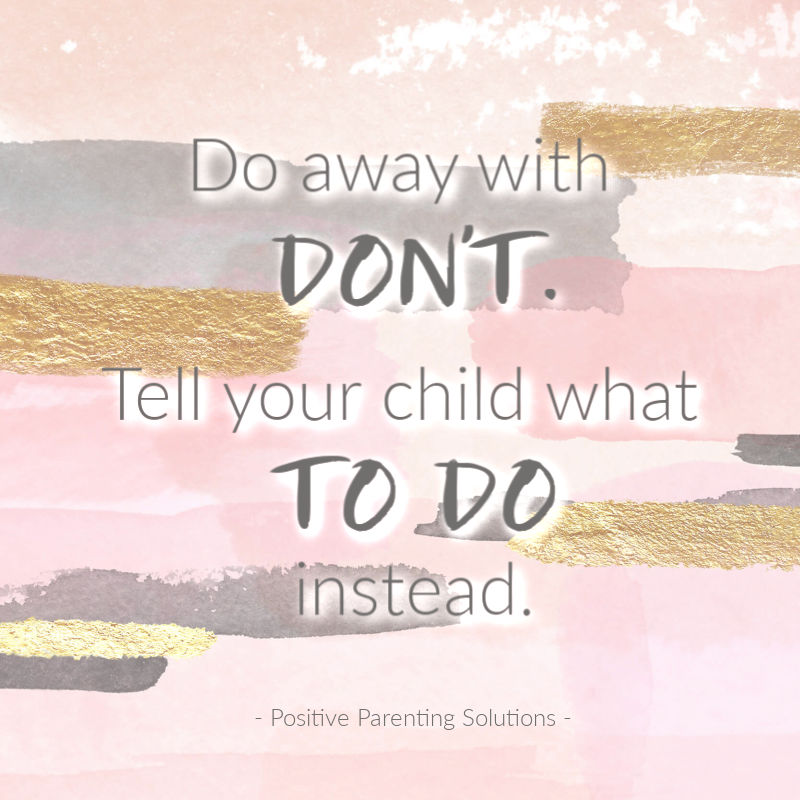How to Get Kids to (REALLY) Listen: 7 Steps for Success

You’ve asked your child to do something. Very calmly. Very rationally. And very deliberately.
Instead of action, you get the kid equivalent of crickets. Radio silence.
“Maybe they didn’t hear me?” you think. So, you ask again nicely. Firmly, but nicely.
Nothing.
You feel yourself rapidly falling into the familiar cycle of “Repeat. Remind. Repeat. Remind.”
And then it happens–the fuse blows. In a moment of utter defeat, you’re left screaming the same demands you had requested calmly just minutes ago. The energy escalates and everyone is left frustrated and discouraged.
I get it. So do most parents. I’ve been a parenting educator for 15+ years and can say unequivocally that children “not listening” is the most common frustration I hear from moms and dads.
Here’s the thing though, if you want to get a handle on your child’s unresponsiveness, the first thing you need to do is figure out WHY he is NOT listening. More often than not, his lack of response is a SYMPTOM, not the actual problem.
If you don’t address this issue at its roots, you’re sure to see a simple case of “not listening” blossom into bigger behavior issues such as tantrums, defiance, and backtalk.
Why Don’t Kids Listen?
Good question! Why are they tuning you out? Why do you have to repeat something over and over until you find yourself yelling?
(Before we go any further, be sure you’ve ruled out any potential medical condition that could be affecting your child’s hearing or comprehension. If you are confident your child’s ears are fully-functioning, read on.)
Children of all ages–toddler through teens–have a hard-wired need for power. When children don’t have opportunities to exert their power in positive ways–choosing what clothes to wear, making the dinner menu, picking what game to play, etc.–they will exert their power in negative ways.

Because children DO have control over their body and language, the most common (and frustrating) power struggles occur when children use their bodies and language to defy our requests.
By choosing NOT to listen, children can assert their power. This behavior is simply a way children express their need for more control and decision-making ability in their lives.
I’m not suggesting you let them call every shot. However, by implementing a few easy-to-learn positive parenting techniques, you can give your children power within your boundaries. By doing this, cooperation from your children will improve and the dreaded repeat – remind – repeat – remind cycle will come to an end.
Is “Not Listening” Just a Label?
Before we dive into strategies to improve communication with your children, consider this question–What exactly are you referring to when you say your child “doesn’t listen?”
When talking to parents, “not listening” usually ends up being a blanket term that covers a myriad of issues. Because “not listening” is so broad, it can be difficult to find a solution.
I’m not saying there aren’t times when your child is just flat-out ignoring you–that happens! However, more often than not, it’s less about “not listening” and more about some underlying issue.
Is she tired, hungry, or not feeling well? Or, is there some deeper control issue that is causing her to disconnect such as…
Chores?
Bedtime?
Don’t lump every communication shutdown under the “not listening” umbrella. Dig in and discover what’s really going on, then you can make an action plan to specifically address that problem.
Now, if it truly is a classic case of not listening, here are 7 steps you can take to ensure your kids actually hear you.
7 Steps to Get Kids to Listen
1. Get on Their Level
When you need your child’s attention, make sure you get her attention–that means eye contact. When you lower yourself down and look her in the eye, you not only verify she sees and hears you, but you strengthen the communication as well.
This means you might have to step away from the laundry or put down the whisk for a minute and step into the other room. Proximity is key–you’re not talking down to her or barking orders from the other room–you’re speaking with her.
2. Do Away With “Don’t”
Don’t touch your brother. Don’t run in the hall. Don’t play with your food. Don’t read the next sentence. (See what I did there?)
Negative commands, such as “don’t” and “no” require kids to double process. Kids have to answer two questions:
1) What does she NOT want me to do?
2) What does she want me to do instead?
That’s confusing and contradictory. For example, if you say “Don’t touch your brother,” a child has to stop the current behavior AND determine the appropriate alternative behavior–If I can’t touch him, does that mean I can’t hug him? Can we play tag? Can I give him a high five? Can I help him put on his jacket or tie his shoes if mom asks?
Instead, tell your child what to DO.

Instead of “Don’t touch your brother,” try “Use gentle touches when touching your brother” or “Your brother doesn’t want to be touched right now, so please keep your hands folded while we are in the car.”
Instead of “Don’t leave your toys all over the floor,” try “Please put your toys in the toy bin.”
Instead of “Don’t run in the hall,” try “Please walk in the hall.”
3. Say YES to “YES”
Think about it for a moment. What is your normal, knee-jerk reaction to the 10,000 requests you get from your child every day? “NO,” right?
When you’re bombarded with requests, it’s difficult to sift through them in a meaningful way, so you just deliver canned responses–“No, not today.” “No, I don’t have time for that.” “No.” “Nope.” “Nada.”
But when “no” is your constant go-to answer, it’s no wonder kids stop listening to YOUR requests! Look for reasons to say yes more often. Your “yes” answers will begin to surprise and delight your child and have them paying more attention when you ask for something!
Instead of “No we can’t go to the park,” try “The park sounds awesome! Should we go Friday after school or Saturday morning?”
Instead of “No, you can’t have ice cream” try “Ice cream is delicious! Would you like to have it for dessert on Saturday or Sunday evening?”
While there will still be situations that require a hard “no,” by offering more “yeses” you’ll increase the chances your kid will tune you back in.
4. Shorten Your Speech
Oh boy, I was as guilty of this as anyone. Parents, and especially moms, tend to turn a five-second answer into a five-minute dissertation!
There’s a saying in the sales industry, “never sell with blah-blah what you can sell with blah.” I think it makes sense in parenting too. When trying to get your kid’s attention, be as concise as possible and they won’t even have time to tune you out!
5. Say “Thank You” in Advance
Help your kids make an appropriate choice by taking this leap of faith. Your preemptive “Thank you for hanging up your towel after your shower,” will encourage your kids toward good behavior much more than, “I better not see your towel on the floor again!”
People, and yes, even children, will usually live up to our expectations if we manage them in a positive way. Letting them know, in advance, that we trust them to do the right thing will cultivate open communication lines and increase the likelihood the task will get completed.
6. Ensure Comprehension
A simple way to ensure your child has heard you and that she understands is to ask her to repeat back what you said.
In the medical field, studies have shown that 40-80% of the information doctors relay to patients is either forgotten completely or misunderstood (and keep in mind, these are ADULTS we are talking about, not just children).
To combat this misunderstanding, doctors have begun using the teach-back method, which calls on patients to “teach back” to the doctor what treatment instructions they were just given. This method has been shown to drastically increase information retention from patients.
The same tool can be used effectively with children. Once you’ve made eye contact, shortened your speech, and clearly explained what you need your child to do, calmly ask your child to repeat back what they’ve just heard.
By ensuring everyone is on the same page, you will see an instant improvement in communication and cooperation in your home.
7. Make an Observation
If you see a task that’s been left undone, don’t dive in with a big reprimand, just make an OBSERVATION: “I see a jacket on the floor,” or you can ask, “What is your plan for taking care of the trash today?”
“What is your plan for?” is one of my favorite strategies to avoid power struggles. It’s empowering because it’s assumptive on your part that they have a plan–and gives your child an opportunity to save face and quickly come up with a plan in the moment if they didn’t already have one!
“Oh yeah! I was planning on taking out the trash right after I finish my lunch.” This gives you the chance to put a positive parenting empowerment spin on the whole conversation! “That’s awesome–I really appreciate your help, buddy.”
Final Thoughts
Remember that “not listening” should always be a wakeup call for us. While it might seem like defiance or inattention on their part–it is more than likely a way to get our attention or express their need for power.
Kids and adults alike have a need to be seen and heard. When this need isn’t met, kids will stop listening to us. It may sound counterintuitive, but CLEARLY it works since it’s the number one complaint parents share!
If power struggles like not listening are creating stress in your family, I’d love to walk you through our step-by-step road map for parenting toddlers to teens. I love to help parents solve this issue and have helped thousands of families just like yours.
If you’re not quite ready to jump in, at least join me for a FREE ONLINE CLASS.
I’ll teach you more strategies to get your kids to LISTEN without nagging, reminding, or yelling and you’ll start feeling relief within days!
As always, happy parenting! We’re here for you!
What You Should Do Next:
1. Get Quick Actionable TIPS delivered to your inbox
Sign up for my newsletter for parenting tips to help you create a happier home and become the parent you always wanted to be. Plus, when you subscribe, I'll also send you a copy of our strategy-packed guide 10 Tips for Better Behavior – Starting NOW!
2. Unlock the secrets to easier parenting in my FREE CLASS
Register for my free class called How to Get Kids to Listen, Without Nagging, Yelling or Losing Control. Classes run several times per week to accommodate your busy schedule.
3. Transform your family with the 7-Step Parenting Success System® Course
Join the hundreds of thousands of parents who have transformed their families with the 7-Step Parenting Success System® Course. Learn the tools you need to raise happy, respectful, responsible kids and create the family life you always dreamed of having.
About the Author






